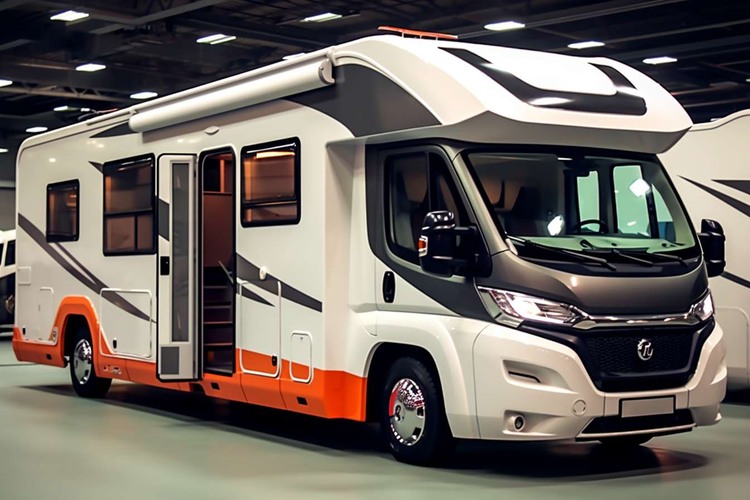Electric RVs in 2025: Vehicle Types, Energy Storage Options and Travel Range
The recreational vehicle industry is experiencing a significant transformation as electric technology advances rapidly. Electric RVs represent a growing segment that combines sustainable travel with the freedom of mobile living. These innovative vehicles offer unique advantages including reduced environmental impact, lower operating costs, and quieter operation compared to traditional diesel or gas-powered motorhomes. Understanding the current landscape of electric RVs, their capabilities, and limitations helps potential buyers make informed decisions about this emerging technology.

Electric recreational vehicles are reshaping how people approach mobile travel and outdoor adventures. As battery technology improves and charging infrastructure expands, these vehicles are becoming increasingly viable alternatives to conventional RVs. The market includes various configurations from compact travel trailers to full-sized motorhomes, each designed to meet different travel needs and preferences.
Important Things To Know About Electric RVs
Electric RVs utilize battery-powered electric motors instead of internal combustion engines, fundamentally changing how these vehicles operate. Most current models feature lithium-ion battery packs ranging from 100 kWh to over 200 kWh capacity. These systems power both propulsion and onboard amenities including lighting, appliances, and climate control. Key considerations include charging requirements, weight distribution, and the integration of solar panels for extended off-grid capability. Many electric RVs also incorporate regenerative braking systems that help recharge batteries during travel, improving overall efficiency.
What to Know About Range And Power Systems
Range capabilities vary significantly among electric RV models, typically spanning 150 to 400 miles per charge depending on battery size, vehicle weight, and driving conditions. Power systems generally include multiple battery banks with sophisticated management systems that prioritize energy distribution between propulsion and living amenities. Fast-charging capabilities allow many models to reach 80% capacity within 45 minutes to 2 hours using DC fast chargers. Solar panel integration can provide 200-800 watts of supplemental power, extending range and supporting off-grid camping. Understanding power consumption patterns helps owners maximize travel distance and camping duration.
Electric RVs VS Traditional RVs
Electric RVs offer several advantages over traditional models including significantly lower fuel costs, reduced maintenance requirements, and quieter operation that enhances camping experiences. However, they currently face limitations in range, charging infrastructure availability, and higher upfront costs. Traditional RVs provide greater range flexibility and faster refueling but produce emissions and require more frequent maintenance. Electric models excel in short to medium-distance travel and destinations with adequate charging infrastructure, while traditional RVs remain better suited for extended cross-country journeys and remote area exploration.
Price Comparison Of Electric RV Brands And Models
The electric RV market includes several manufacturers offering different vehicle types and price points. Current pricing reflects the premium nature of electric technology and limited production volumes.
| Model Type | Manufacturer | Price Range | Key Features |
|---|---|---|---|
| Class B Van | Winnebago eRV2 | $180,000-$220,000 | 86 kWh battery, 125-mile range |
| Travel Trailer | Airstream eStream | $150,000-$180,000 | Solar integration, 200-mile towing range |
| Class A Motorhome | Thor eVision | $500,000-$600,000 | 200+ kWh battery, 300-mile range |
| Compact Trailer | Lightship L1 | $125,000-$150,000 | Aerodynamic design, self-propelled |
| Class C Motorhome | Ford E-Transit RV | $120,000-$160,000 | Commercial van base, modular interior |
Prices, rates, or cost estimates mentioned in this article are based on the latest available information but may change over time. Independent research is advised before making financial decisions.
Campground Access And Power Management Systems
Electric RV compatibility with existing campground infrastructure varies significantly across locations. Many RV parks are upgrading electrical systems to accommodate higher power demands, though 50-amp service remains standard. Some facilities now offer dedicated EV charging stations or upgraded 100-amp connections. Power management systems in electric RVs automatically balance energy distribution between essential systems and luxury amenities based on available battery capacity. Smart systems can prioritize critical functions like refrigeration and lighting while reducing power to non-essential devices when battery levels drop. Understanding campground electrical capabilities and reservation policies for electric vehicles ensures successful trip planning.
Electric RVs represent an evolving segment of the recreational vehicle market that offers environmental benefits and operational advantages alongside current limitations in range and infrastructure. As battery technology continues improving and charging networks expand, these vehicles will likely become increasingly practical for diverse travel applications. Potential buyers should carefully evaluate their travel patterns, budget considerations, and charging requirements when considering electric RV ownership.




